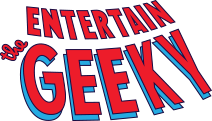Jason O’Toole
Images Courtesy Of DC Comics
For the second part of my Metal review, I have decided to spotlight the tie-in series that showed us how the rest of the DC characters dealt with the dark Batmen. The first of these crossovers took place in the pages of Teen Titans, Nightwing, Suicide Squad and Green Arrow. The crossover was titled Gotham Resistance, and dealt with the villains of Gotham City gaining god-like powers from playing cards given to them by the Batman who laughs. The second crossover was Bats out of Hell, and took place in the pages of Flash, Justice League and Hal Jordan and the Green Lantern Corps. It dealt with the dark Batmen and the Batcaves they had built to deal with the rest of the Justice League after Batman and Superman were taken prisoner by Barbatos.
Gotham Resistance
This story was my least favorite of the two tie-in series. It’s not a bad story, it just feels very isolated from what is going on around it. When the dark multiverse breaks through, a giant mountain springs up in the middle of Gotham City. Robin assembles a team to deal with this crisis at home. Nightwing, the Suicide Squad and Green Arrow, who promised Batman that he would look after Robin, join in the fight against the villains. Their first challenge comes from the Riddler and his labyrinth. It ends up devolving into a battle against robots designed by the villain. DC really missed the mark with this issue. Instead of focusing on the psychological aspects of the Riddler’s character, they chose to make it a physical altercation. The story then moves into Nightwing where our heroes have to deal with Mr. Freeze and his army of frost giants. The slow start gives way to a solid second issue that proves it has a good understanding of the physicality of a villain like Freeze. This issue further spotlights the flaws in the first one. Freeze is the villain that fights, not Riddler. The crossover stays strong with an excellent third issue that puts Harley Quinn and the Suicide Squad up against Poison Ivy and a mutated jungle. Harley and Ivy already have a well established love-hate relationship, and deciding to put that at the center of the books narrative is the only choice. Also, Killer Croc has a great self sacrificing moment that ultimately saves the team, which is amazing to see from a villain like Croc. The story finishes strong with our first real look into the madness that is the Batman who laughs. Damian also comes face to face with the Robin of the Batman who laughs, a dark reflection of himself with a twisted grin and pale white skin. The Batman who laughs makes a grand entrance onto the field of battle. We start to understand that the will of Bruce Wayne will be hard to take down when it’s also fueled by the madness of the Joker. Overall, this tie-in series works on a lot of levels but ultimately doesn’t add much to the overall narrative.
Bats Out Of Hell
In search of artifacts that can fight back against the dark multiverse, the Flash, Wonder Woman and Green Lantern are taken to Batcaves specifically designed to kill them. This story is fantastic because it expands on why these twisted versions of Bruce are superior. They are not only physically capable of defeating their foes, they have a psychological advantage because they are all Bruce Wayne without a moral compass. The crossover starts strong with Flash taking on the Red Death. They are evenly matched but ultimately Barry cannot keep fighting Bruce. He pulls his punches which is exactly what Barry, the heart of the Justice League, would do. We then see Wonder Woman deal with the Merciless, a version of Bruce that once loved Diana and had to watch her die. This issue shows us exactly how Diana should be written. Her physical prowess makes for an intense fight between her and Bruce. However, like Barry before her, Diana cannot break the Merciless and is taken captive. Barry and Diana fail to take down Bruce, but if any hero can do it would be Hal Jordan, the Green Lantern. His willpower is what drives his power ring. The weakness that Bruce takes advantage of in his foes is not shared by Hal. He comes closer than any to defeating his foe, the Dawnbreaker. Ultimately, like all the others, he is defeated and taken captive. The finale proves to be the best issue of this crossover. It puts the spotlight on a character that doesn’t get that often enough, Cyborg. Bryan Hitch, the writer of Justice League, proves that he has a firm grasp of the characters he writes. Cyborg takes a mind bending journey into his mother box and expands his mind beyond comprehension. The hopelessness that has characterized the other issues of this crossover takes a brief back seat to a small sliver of hope. It is not much but it sets the stage for what will surely be a spectacular ending to the main series.
Stay Geeky!
On Facebook facebook.com/entertainmentgeeky
On Twitter @entertaingeeky
Chat With Jason etgnerdnews@gmail.com



